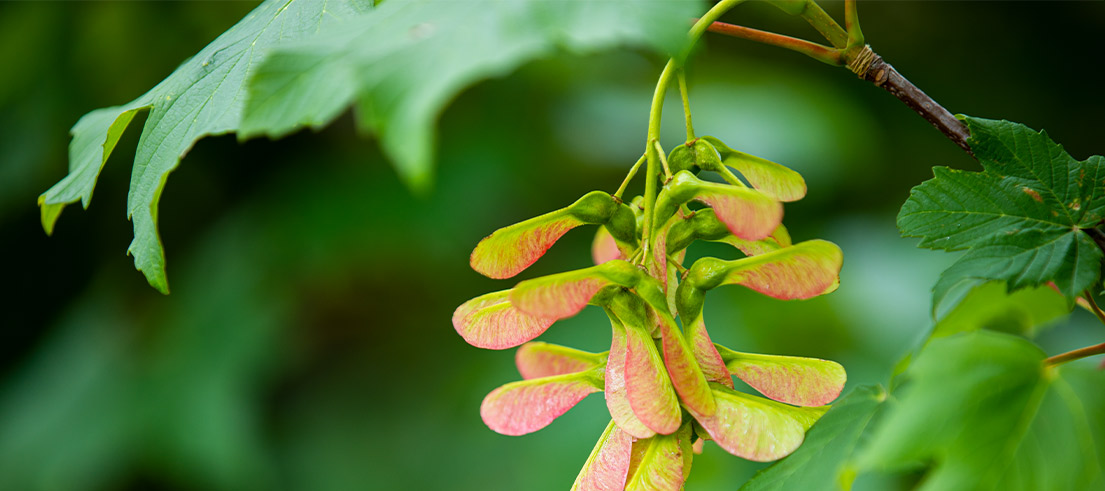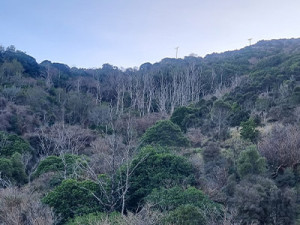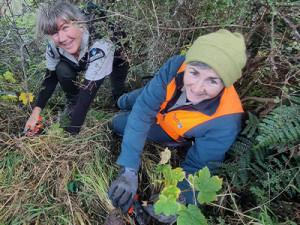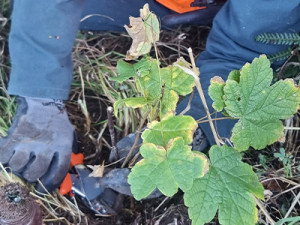
Pigeon Bay's biodiversity boosted by sycamore control
A long-term collaborative approach to sycamore control in Pigeon Bay by landowners, Environment Canterbury and Christchurch City Council (CCC) has allowed native vegetation to recover on the hillsides surrounding the bay.
The project, which began in 2012, has received 80 per cent of its funding from us, with the remaining 20 per cent funded by landowners. The funds have been used to control mature sycamores, along with the removal of seedlings and saplings.
Sycamore trees are regarded as an invasive weed in Banks Peninsula. They spread easily, are shade tolerant and grow tall - which enables them to shade out existing native vegetation, preventing the regeneration of native forests.
Important relationships
Project manager Di Carter, from CCC, said the project has resulted in the eradication of around 80 per cent of sycamore trees from Pigeon Bay. She attributed its success to the cooperative and supportive relationships that have formed over the last decade between CCC, Environment Canterbury, landowners, and contractors.
Initial roadside control of sycamore was conducted in Pigeon Bay in March 2012 before a survey was sent to 48 local landowners in late 2013 to assess their interest in a sycamore control project. A meeting was held at the Pigeon Bay Hall in early 2014 to engage with landowners and to seek feedback on the proposal.
"We took time to connect with the community before we started work on the project. Being able to meet face to face at the local hall to discuss how we could work together to remove the sycamore trees and encourage native regeneration was an important first step."
A trial to determine the best control method was conducted in March 2014. Sediment testing was also carried out in the nearby stream to ensure there was no impact on the waterway.
Sapling and seedling removal
Around 2000 larger sycamore trees were eradicated by 2017 and since then the focus has been on the painstaking work of sapling and seedling removal, which is conducted by hand. Contractors spent several years on this removal work and Di and her team have followed up to ensure that a high standard of seedling control has been achieved.
"We must be careful when we remove the saplings not to leave any stems lying on the ground or they can sprout roots and shoots again. Consistent and vigilant management is the only way to keep on top of sapling and seedling control.
"It is fantastic to see the huge changes that have occurred here over the last decade with native trees and shrubs beginning to take over from the vast number of sycamore trees that once dominated the canopy."
Solving a historic problem
Pigeon Bay landowners Richard and Lynley Holloway said sycamore spread has been a problem in the area for over a century and they were extremely grateful to have Di's expertise to help solve an inherited, historical problem.
"Sycamore spread usually started from around old Pigeon Bay homesteads, often dating back to the 1860s and 1870s. One or two mother trees could result in a wide area of infestation, usually upwind, as was the case on our property with nor-west winds blowing highly mobile seed progressively further and further up the gully."

Native trees and shrubs are re-emerging along Pigeon Bay's hillsides after around 2000 sycamore trees were removed during a 10-year project.

Christchurch City Council project manager Di Carter and field operations ranger Fiona Fenton remove a sycamore sapling from Pigeon Bay.

Sycamore saplings must be carefully removed before the roots are coated in a gel to prevent re-emergence of the trees.
Praise for a consistent approach
Richard said the project is a positive example of how a public/private partnership can work and he credits Di's motivation, energy, and enthusiasm for its success.
"Having one person who stays the course throughout the entire 10 years we have been working on this project has been key. Landowners' interactions with local government are often neither productive nor pleasant but Di has changed our perception on this.
"We have been really impressed by her enthusiastic approach to this work. Di and her team have been out there in all types of weather putting in 10-hour days to remove those persistent saplings by hand, often on steep hillsides while being stung from top to bottom by native nettle. Not many people would hang in there the way she has."
